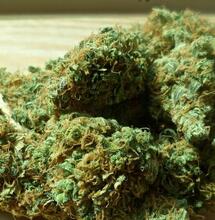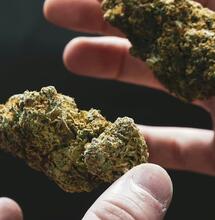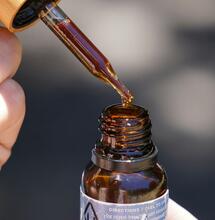Cannabis and Adaptogenic Herbs: a Powerful Combination?

Cannabis and adaptogenic herbs are engaging with two different systems in the human body, but they more or less produce similar calming effects. Let’s find out more about adaptogenic herbs, what are their health benefits, and how they synergize with cannabis.
What Are Adaptogenic Herbs?
Adaptogenic herbs are a group of special plants and mushrooms which have an innate function to balance the body and help it recover from or even resist stress. Also known as adaptogens, these herbs participate in how the body modulates responses to stress. Popular examples of adaptogenic herbs include Ashwagandha, Schisandra, Rhodiola rosea, Holy Basil, Cordyceps, Reishi mushrooms and Ginseng, among others.
How Do Adaptogens Work in the Body?
As mentioned, adaptogenic herbs work by supporting the body’s ability to cope with various stressors, which can be anxiety attacks, fatigue, chronic stress from work, experiencing physical injury, or infection from disease. Their continued consumption is supposed to help restore health.
More specifically, adaptogenic herbs have an effect on the Hypothalamic-Pituitary-Adrenal (HPA) axis, a key neuroendocrine system that is directly involved with the working of our nervous system and its responses to stressors. In order for the adaptogens to deliver soothing results in the body, they need to be ingested over a prolonged period of time, but also they shouldn’t be overconsumed. Regular or occasional use of adaptogens may slow down the release of cortisol (the so-called ‘stress hormone’) as well as adrenaline and noradrenaline (a neurotransmitter and hormone that modulates alertness, attention and arousal).
Summed up, the actions of adaptogens may be beneficial to stress hormone regulation; their effect is homeostatic, as they impact multiple body systems, including the immune, nervous and endocrine systems. Longer term ingestion of adaptogenic herbal medicines can improve the body’s resilience to both internal and external stressors.
What Are Some of the Best Known Adaptogenic Herbs?
A common characteristic of many adaptogenic herbs is that they can adapt in harsh environments, and some of them originate from such places. Let’s take a look at some examples.
Ashwagandha
Check any list of adaptogenic herbs and everywhere you will see Ashwagandha somewhere on the top. This is one of the most commonly used adaptogenic herbs, usually for stress. It’s a shrub that grows in Asia and Africa, and it contains compounds that are considered to help calm down the brain, reduce inflammation and lower blood pressure. It’s taken for anxiety, insomnia, as well as it can be used for stress-related weight gain. It’s safe to use for up to 3 months and then pause.
Holy Basil
The other name of this green leafy herb is tulsi. Holy Basil thrives in the tropical and subtropical belts of Asia, Australia and parts of the Pacific, and has been used for various ailments in traditional medicine, such as eye infections and fungal parasites. The herb is noted for its anti-inflammatory, anti-stress and antioxidant qualities. Among the compounds of this adaptogenic herb is also beta-caryophyllene, a terpene that is found in every strain of cannabis.
Cordyceps
This is an example of medicinal fungi. The primary function of cordyceps is to strengthen and balance the immune system. The type of fungi that is also helpful for regulating auto-immune diseases, and which can be supplemented in the treatment of Hepatitis B. During cancer treatments, it’s considered that cordyceps enable the patient to better react during and after chemotherapy and radiation. We write more about medicinal mushrooms here.
Rhodiola rosea
A flower that has been used for centuries in Scandinavia and Russia. Also known as the arctic root, Rhodiola is used as a remedy for anxiety, fatigue and depression symptoms. The properties of this adaptogenic help balance the neurotransmitters in the brain, subsequently improving focus, concentration and overall cognitive function.
What is the Most Powerful Adaptogen?
Another well-known adaptogen is ginseng, which by many is considered to be the most powerful one. Ginseng is available in several varieties. Such as the Asian ginseng (also called the Korean or Red ginseng), American ginseng, Siberian ginseng, and others. All types of ginseng are classified under the name ‘Panax,’ which in Greek denotes ‘all healing.’ Consumption of ginseng leads to feeling more calm. Available in root and powder form, it’s believed that ginseng balances blood sugar levels as well as that it harmonizes the work of the immune system. In addition, it optimizes hormones, enhancing sex drive in both males and females. We extensively write about ginseng here.
Do All Adaptogens Synergize with Cannabis?
In most cases, cannabis will work well with whichever adaptogen you might take. Cannabis and adaptogenic herbs essentially target two separate biological systems all while producing similar effects. There is little information about all the possible reactions between Cannabis and adaptogens once together in the body. But it is known that both CBD and THC pair well with some of the more widely used adaptogens, such as Ashwagandha or Holy Basil.
How Adaptogenic Herbs and Cannabis Work Together?
While cannabis compounds engage the endocannabinoid system, adaptogenic herbs engage the HPA axis. Cannabis works instantaneously to offer relief from stress or pain, while adaptogens contribute on the long term, with consistent daily use, thus building up stress resilience. Therefore, using both cannabis and adaptogenic herbs can be a powerful combination where the two complement each other’s work.
Some adaptogenic herbs or at least some of their compounds are “cannabimimetic,” which means they practically imitate how cannabinoids engage with the endocannabinoid system in order to modulate mood, appetite, sleep or immune responses.
In addition, cannabis and adaptogens may share some of the same compounds. More specifically, they may carry the same terpenes. Holy Basil contains beta-caryophyllene, a terpene which is found in practically all strains of cannabis, whether in higher or lower concentrations. Ginseng is rich in humulene, a perfect naturally-occurring energy booster. Humulene is present in a variety of cannabis strains, including Girls Scout Cookies, Super Lemon Haze, White Widow, Pink Kush or Bubba Kush.
Drinking ginseng tea and smoking a cannabis strain rich in humulene is one example of how to powerfully combine cannabis and adaptogenic herbs. It just might produce a doubled effect.
What Are the Benefits of Combining Cannabis with Adaptogenic Herbs?
One of the main uses of both cannabis and adaptogenic herbs is their ability to relieve stress. Taken together, your body is exposed to two potent therapeutic agents that synergistically work side by side to deliver the same desired anti-stress effect. Beyond stress, certain combinations can double on the impact to other health issues you might want to address with these natural medicines. Be it poor sleep, anxiety, mood swings, or other problems.
When to Be Cautious?
While generally considered safe, taking excessive amounts of adaptogenic supplements, whether its tea or powder, might lead to unwanted side effects. Adaptogens may upset the stomach and cause diarrhea and nausea, or they can also cause headaches. So, just like with cannabis, it’s wise to be cautious and not be greedy with the adaptogenic herbs either. Listen to your body and follow all reactions after ingesting any herbal supplement.
More from Soft Secrets:











